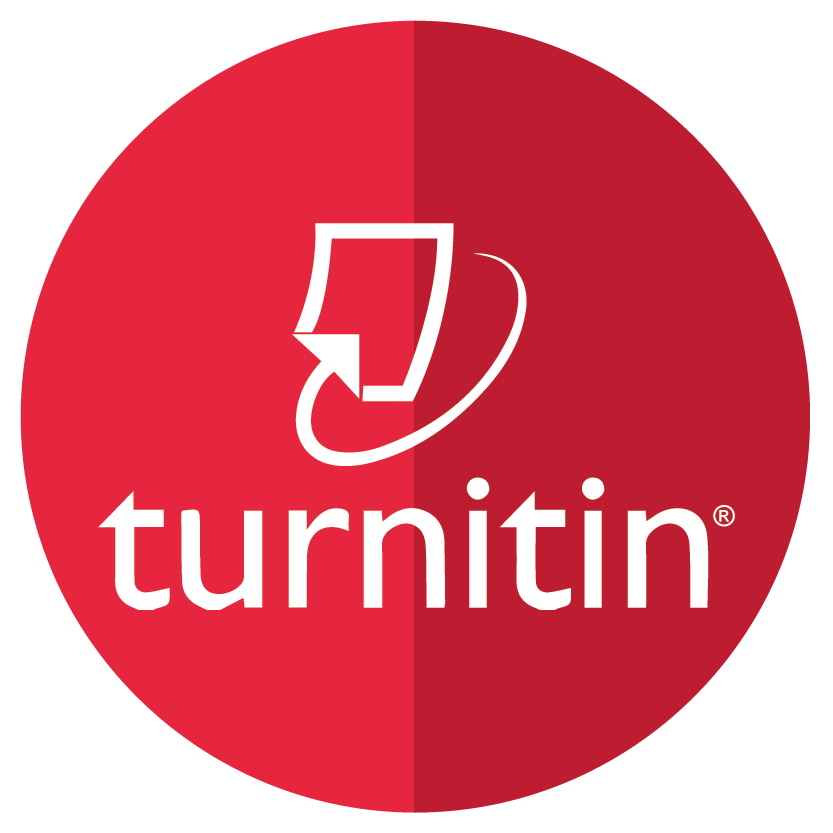THE EFFECTIVENESS OF THE RME METHOD TO IMPROVE STUDENTS' UNDERSTANDING OF THE CONCEPT OF A SQUARE
Abstract
Students in class VII still have difficulty solving contextual problems related to the concept of a square. Through research, it will be shown that Realistic Mathematics Education(RME) and expository are more effective if it is based on students' post-test results after studying the concept of a square. The research objectives were achieved using a quasi-experimental method involving 2 groups of subjects, namely an experimental group of 33 students and a control group of 34 students. The subject group came from the class VII population at one of the junior high schools in Kebumen. The data analyzed is in the form of final semester exam results and posttest results collected using a test instrument in the form of 10 multiple choice questions. The data were analyzed using balance tests, normality tests, homogeneity tests, and effectiveness tests. Based on the results of the t-test and the hypothesis determined by the researcher, it can be shown that the application of the Realistic Mathematics Education(RME) method is more effective than the expository method. This conclusion is also strengthened by the mean value of the experimental group which is higher than the control group.
Full Text:
PDFReferences
Afifah, A. H., Susanto, & Lestari, N. D. S. (2022). Geometric reasoning of analysis level students in classifying quadrilateral. AIP Conference Proceedings, 2633. https://doi.org/10.1063/5.0105224
Alifah, F. N. (2019). Pengembangan Strategi Pembelajaran Afektif. Tadrib: Junal Pendidikan Agama Islam, 5(1), 68–86. https://doi.org/doi.org/10.19109/tadrib.v5i1.2587
Budiarto, M. T., & Artiono, R. (2019). Geometri dan Permasalahan dalam Pembelajarannya (Suatu Penelitian Meta Analisis). JUMADIKA: Jurnal Magister Pendidikan Matematika, 1(1), 9–18. https://doi.org/10.30598/jumadikavol1iss1year2019page9-18
Budiyono, B. (2017). Pengantar Metodologi Penelitian Pendidikan. Surakarta: UNS Press.
Elsa, H. A., Kurniati, N., & Herman, T. (2022). Students’ Errors in Solving Mathematical Connection Problems on Quadrilateral Topics. Unnes Journal of Mathematics Education, 11(3), 239–247. https://doi.org/10.15294/ujme.v11i3.61385
Elsa, H. A., & Suhendra. (2022). Analysis of Junior High School Student’s Error in Solving Mathematical Connection Problems on Quadrilateral Topics. Mathematics Education Journals, 6(1), 81–88. https://doi.org/10.22219/mej.v6i1.19427
Fahrurrozi, M., Mohzana, M., & Murcahyanto, H. (2021). Strategi Pembelajaran dan Kemampuan Guru Kelas. Journal of Education and Instruction (JOEAI), 4(1), 197–205. https://doi.org/10.31539/joeai.v4i1.2146
Jannah, A. F., & Prahmana, R. C. I. (2019). Learning fraction using the context of pipettes for seventh-grade deaf-mute student. Journal for the Education of Gifted Young Scientists, 7(2), 299–321. https://doi.org/10.17478/jegys.576234
Kedhi, K., Bhoke, W., & Wangge, M. C. ali. (2024). Penerapan Model Pembelajaran Matematika Realistik untuk Meningkatkan Kemampuan Numerasi Siswa pada Materi Bangun Datar (Persegi Panjang). MATH-EDU: Jurnal Ilmu Pendidikan Matematika, 9(1), 398–412. https://doi.org/10.32938/jipm.9.1.2024.398-412
Khoerunnisa, P., Syifa, &, & Aqwal, M. (2020). Analisis Model-Model Pembelajaran. Fondatia: Jurnal Pendidikan Dasar, 4(1), 1–27. https://doi.org/doi.org/10.36088/fondatia.v4i1.441
Kim, S., Raza, M., & Seidman, E. (2019). Improving 21st-century teaching skills: The key to effective 21st-century learners. Research in Comparative and International Education, 14(1), 99–117. https://doi.org/10.1177/1745499919829214
Kutluca, T. (2013). Educational Research and Reviews The effect of geometry instruction with dynamic geometry software; GeoGebra on Van Hiele geometry understanding levels of students. Educational Research and Reviews, 8(17), 1509–1518. https://doi.org/10.5897/ERR2013.1554
Laviona, Z., Wulandari, H. U., & Ardiansyah, A. S. (2022). Analysis of Student Errors in Solving Problems Based on Polya’s Steps on Ethnomathematical Shades of Quadrilateral Material with PBL Models on Jepara Carving. International Journal of Advanced Mathematics Education, 3(3). https://www.amcs-press.com/index.php/ijame/article/view/1171
Maisyarah, S., & Prahmana, R. C. I. (2020). Pembelajaran Luas Permukaan Bangun Ruang Sisi Datar Menggunakan Pendekatan Pendidikan Matematika Realistik Indonesia. Jurnal Elemen, 6(1), 68–88. https://doi.org/10.29408/jel.v6i1.1713
Meryansumayeka, M., Yusuf, M., & Suganda, V. A. (2018). Pengembangan Video Pembelajaran Berbasis PMRI untuk Mendukung Mental Calculation Siswa dalam Permasalahan Aritmatika Sosial. Jurnal Elemen, 4(2), 119–130. https://doi.org/10.29408/jel.v4i2.634
Prasetyo, M. P., & Masduki. (2023). Exploring the student’s visual reasoning in solving triangle and quadrilateral problems viewed from gender point of view. AIP Conference Proceedings. https://doi.org/doi.org/10.1063/5.0141430
Purba, T. N., Pangaribuan, F., & Hutauruk, A. J. (2022). Pengembangan LKS Pembelajaran Matematika Realistik Berbasis Etnomatematika dengan Konteks Gonrang Sipitu Pitu Simalungun pada Materi Geometri Bangun Ruang Tabung. Jurnal Basicedu, 6(3), 4686–4700. https://doi.org/10.31004/basicedu.v6i3.2873
Putri, R. I. I. (2015). Pengaruh Interaksi Pendekatan Pembelajaran dan Bentuk Tes Formatif terhadap Hasil Belajar Matematika. Jurnal Pendidikan Dan Pembelajaran, 22(1), 69–75. https://journal.um.ac.id/index.php/pendidikan-dan-pembelajaran/article/view/7723/3543
Saefudin, A. A. (2012). Pengembangan Kemampuan Berpikir Kreatif Siswa Dalam Pembelajaran Dengan Pendekatan Pendidikan Matematika Realistik Indonesia (PMRI). Al-Bidayah, 4(1), 37–48. https://doi.org/10.14421/albidayah.v4i1.10
Shoimin, A. (2019). 68 Model Pembelajaran Inovatif Dalam Kurikulum 2013. Yogyakarta: Ar-Ruzz Media.
Sugiyono, S. (2018). Metode Penelitian Kuatitatif, Kualitatif dan R & D Edisi 15. Bandung: Alfabeta.
Supriadi, G. (2021). Statistik Penelitian Pendidikan. Yogyakarta: UNY Press.
Suwito, A. (2018). Analisis Berpikir Secara Geometri Dalam Menyelesaikan Masalah Aljabar Pada Kelas VIII. Prosiding Seminar Nasional Etnomatnesia, 64–69. https://jurnal.ustjogja.ac.id/index.php/etnomatnesia/article/view/2294
Triyono, A., Hamdany Nuary, R., Permatasari, N., Yuni, Y., & Wibowo, T. (2024). The Level of Effectiveness of TPS and Conventional Methods Judging from Students’ Geometry Learning Results Using the N-Gain Test. AlphaMath:Journal of Mathematics Education, 10(1), 125–136. https://doi.org/10.30595/alphamath.v10i1.21530
Warsita, B. (2018). Strategi Pembelajaran Dan Implikasinya Pada Peningkatan Efektivitas Pembelajaran. Jurnal Teknodik, XIII(1), 64–76. https://doi.org/doi.org/10.32550/teknodik.v13i1.440
Wulandari, R., Wahyudi, & Susiani, T. S. (2016). Penerapan Pendekatan RME dengan Media Konkret Untuk Meningkatkan Pembelajaran Matematika tentang Bangun Ruang pada Siswa Kelas V SDN Jatimalang Tahun Ajaran 2015/2016. KALAM CENDEKIA, 4(5.1), 525–531. https://jurnal.fkip.uns.ac.id/index.php/pgsdkebumen/article/view/8350/6296
DOI: https://doi.org/10.37058/jarme.v6i2.11253
Refbacks
- There are currently no refbacks.

This work is licensed under a Creative Commons Attribution-ShareAlike 4.0 International License.
Journal of Authentic Research on Mathematics Education (JARME)
Program Studi Pendidikan Matematika, Universitas Siliwangi
Jl. Siliwangi no. 24 Kota Tasikmalaya - 46115
email: jarme@unsil.ac.id
e-ISSN: 2655-7762
Licensed under a Creative Commons Attribution 4.0 International License
StatCounter:
Detail
Indexed by :


.jpg)
.jpg)



